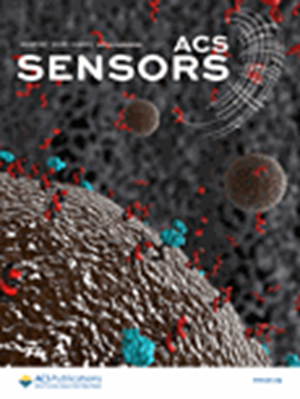Machine Learning-Assisted Multicolor Fluorescence Assay for Visual Data Acquisition and Intelligent Inspection of Multiple Food Hazards Regardless of Matrix Interference.
IF 8.2
1区 化学
Q1 CHEMISTRY, ANALYTICAL
引用次数: 0
Abstract
Regarding the significant health risks of pesticide residue in foods, while current sensors still suffer from limited efficiency and stability, as well as difficulties in qualitative identification and quantitative detection of mixtures, development of innovative detection techniques combined with advanced methodology holds great research value. Herein, a highly efficient intelligent food risk evaluation system was proposed by integrating a multicolor fluorescent responsive assay with machine learning (ML) algorithms for the identification and quantification of multiple pesticides, carbendazim (CBZ), heptachlor (HEP), chlordimeform (CDF), and their mixtures. This method leveraged the color changes generated from the interaction between multicolor carbon dots (CDs) and target pesticide molecules. By extracting color signal feature values from these reactions and integrating the visual data acquisition with ML models, this method enables efficient qualitative identification and quantitative detection of multiple pesticides, regardless of matrix interference through a dual-source data acquisition strategy without large instruments. The developed evaluation system via a ″stepwise prediction″ strategy automatically demonstrated robust qualitative identification capability with a discrimination accuracy of 99.3% for pesticide categorization while achieving robust quantitative prediction accuracy (R2 ≥ 0.8946) for pesticide concentration detection, verified in six kinds of food matrix. This method significantly improves the detection stability and efficiency, providing a promising tool for food safety monitoring.基于机器学习的多色荧光检测技术在多种食品危害的视觉数据采集和智能检测中的应用。
针对食品中农药残留的重大健康风险,目前的传感器在效率和稳定性方面还存在一定的局限性,在混合物的定性识别和定量检测方面也存在一定的困难,开发创新的检测技术并结合先进的方法学具有重要的研究价值。本研究将多色荧光响应法与机器学习(ML)算法相结合,提出了一种高效的智能食品风险评估系统,用于多菌灵(CBZ)、七氯(HEP)、氯虫仿(CDF)及其混合物的识别和定量。该方法利用了多色碳点(cd)与目标农药分子相互作用产生的颜色变化。通过从这些反应中提取颜色信号特征值,并将视觉数据采集与ML模型相结合,该方法通过双源数据采集策略,在没有大型仪器的情况下,不受矩阵干扰,能够高效地对多种农药进行定性识别和定量检测。通过″逐步预测″策略开发的评价系统在农药分类中自动显示出稳健的定性识别能力,识别准确率为99.3%;在6种食品基质中,对农药浓度检测也实现了稳健的定量预测准确率(R2≥0.8946)。该方法显著提高了检测的稳定性和效率,为食品安全监测提供了一种有前景的工具。
本文章由计算机程序翻译,如有差异,请以英文原文为准。
求助全文
约1分钟内获得全文
求助全文
来源期刊

ACS Sensors
Chemical Engineering-Bioengineering
CiteScore
14.50
自引率
3.40%
发文量
372
期刊介绍:
ACS Sensors is a peer-reviewed research journal that focuses on the dissemination of new and original knowledge in the field of sensor science, particularly those that selectively sense chemical or biological species or processes. The journal covers a broad range of topics, including but not limited to biosensors, chemical sensors, gas sensors, intracellular sensors, single molecule sensors, cell chips, and microfluidic devices. It aims to publish articles that address conceptual advances in sensing technology applicable to various types of analytes or application papers that report on the use of existing sensing concepts in new ways or for new analytes.
 求助内容:
求助内容: 应助结果提醒方式:
应助结果提醒方式:


